Data Brief 2022-002 | January 17, 2022 | Written and compiled by Leila Gonzales and Christopher Keane, AGI
Download Data Brief
COVID-19 Impacts on Geoscience Business Operations Through 2021
In 2021, geoscientist-employing organizations’ financial performance
expectations shifted positively relative to 2020. In January 2021,
nearly two-thirds of employers expected their financial performance for
the year would be similar or higher than 2020, and by December 2021, 88%
of employers reported the same. The percentage of employers reporting
lower financial performance expectations relative to 2020 dropped from
36% to 12% between January and December 2021.
In February 2020, 76% of employers expected their financial performance
for the year would be similar or higher than 2019. This sharply changed
once the pandemic began with 50% or more of employers expecting worse
financial performance through December 2020. Financial outlook improved
markedly with the release of vaccine programs and economic reopening
during 2021. During 2021, over half of employers expected their
financial performance to be similar or higher than 2020 as well as than
before the pandemic. By December 2021, 75% of employers reported they
expected their financial performance level to improve relative to before
the pandemic.
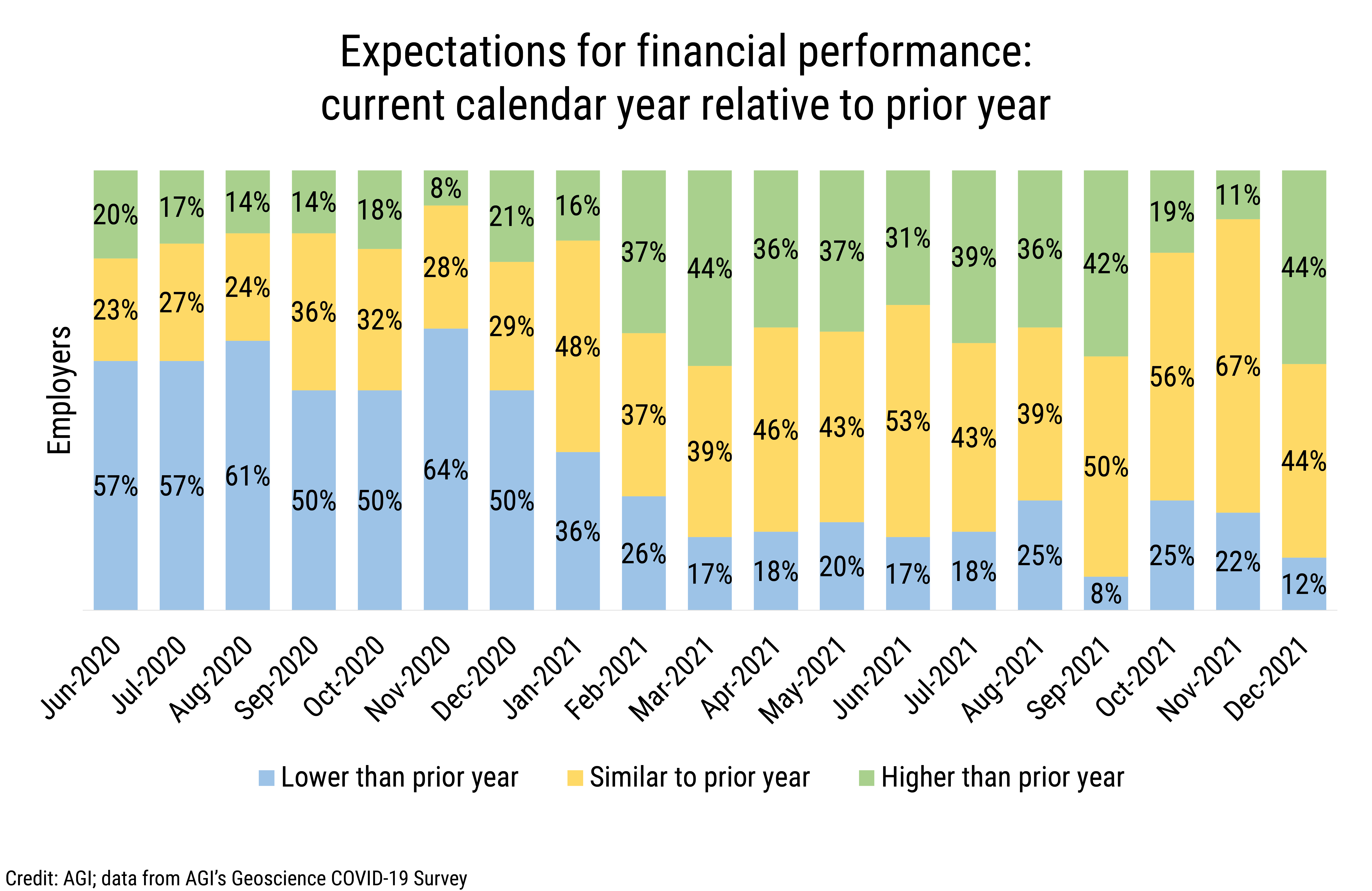
DB_2022-002 chart 01: Expectations for financial performance: current calendar year relative to prior year (Credit: AGI; data from AGI's Geoscience COVID-19 Survey)
AGI
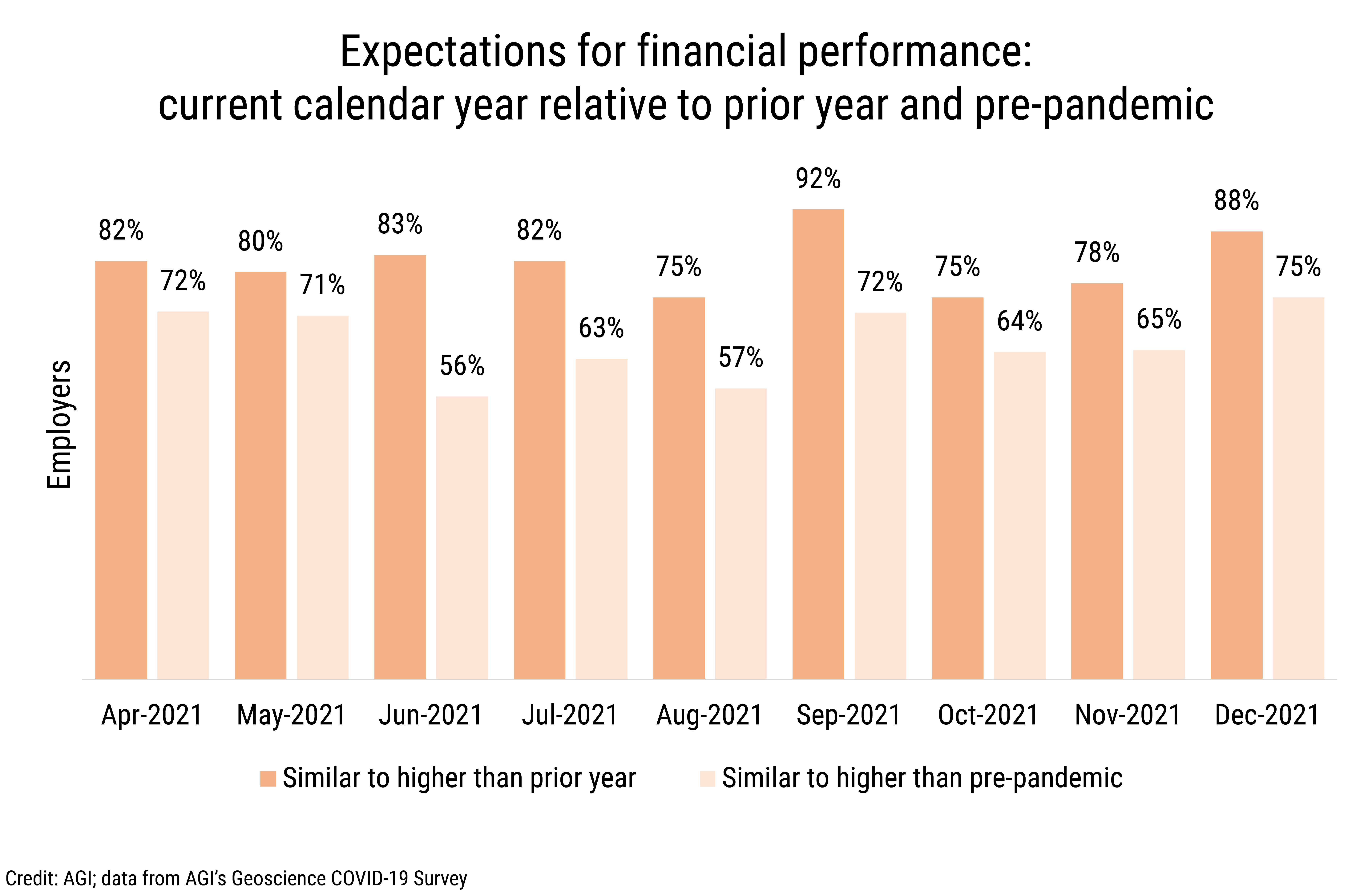
DB_2022-002 chart 02: Expectations for financial performance: current calendar year relative to prior year and pre-pandemic (Credit: AGI; data from AGI's Geoscience COVID-19 Survey)
AGI
Productivity
Since June 2020, most employers have reported full or excess workloads
relative to staffing levels. In 2021, the percentage of employers
reporting excess workloads relative to staffing rose from 29% in January
to 52% in December. For comparison, in 2020 the percentage of employers
reporting excess workloads relative to staffing ranged from 25% to 37%.
The percentage of employers reporting excess staffing capacity in 2021
declined from 44% in January to 24% in December, with the lowest
percentages occurring in August and September (20% and 19%,
respectively).
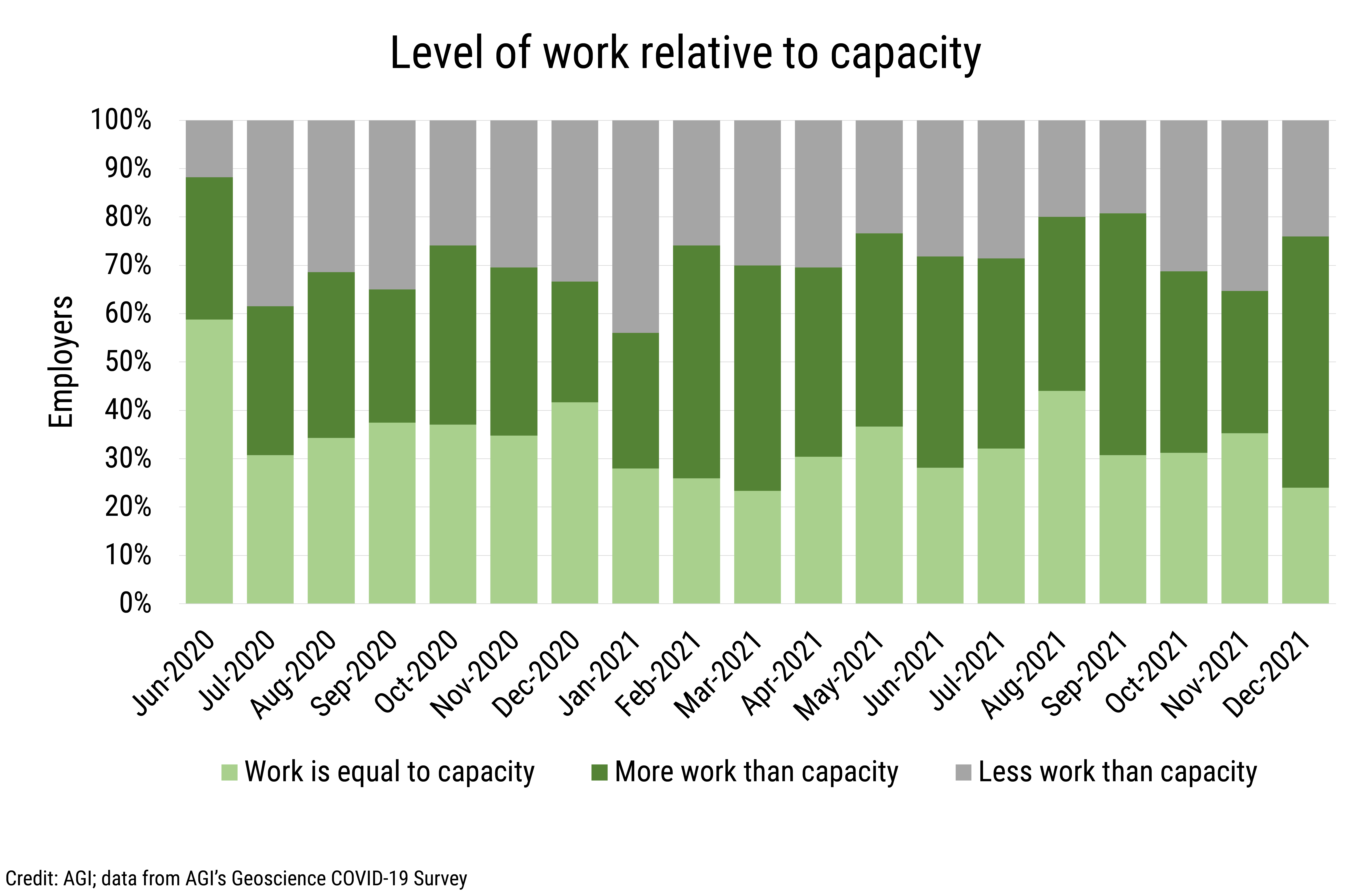
DB_2022-002 chart 03: Level of work relative to capacity (Credit: AGI; data from AGI's Geoscience COVID-19 Survey)
AGI
Financial Assistance
In July 2020, 44% of employers reported receiving some form of financial
assistance, thereafter declining to 15% by the end of the year. Federal
assistance was the primary type of aid received, followed by state and
local aid, and then investment by business owners into their companies.
In 2020, the primary form of aid received in July and August was federal
assistance in the form of loans through the Paycheck Protection Program
and Economic Injury Disaster Loans (EIDL). In 2021, aid from the
American Rescue Plan boosted between 23% to 40% of employers from Spring
through late Summer in the form of federal, state and local assistance.
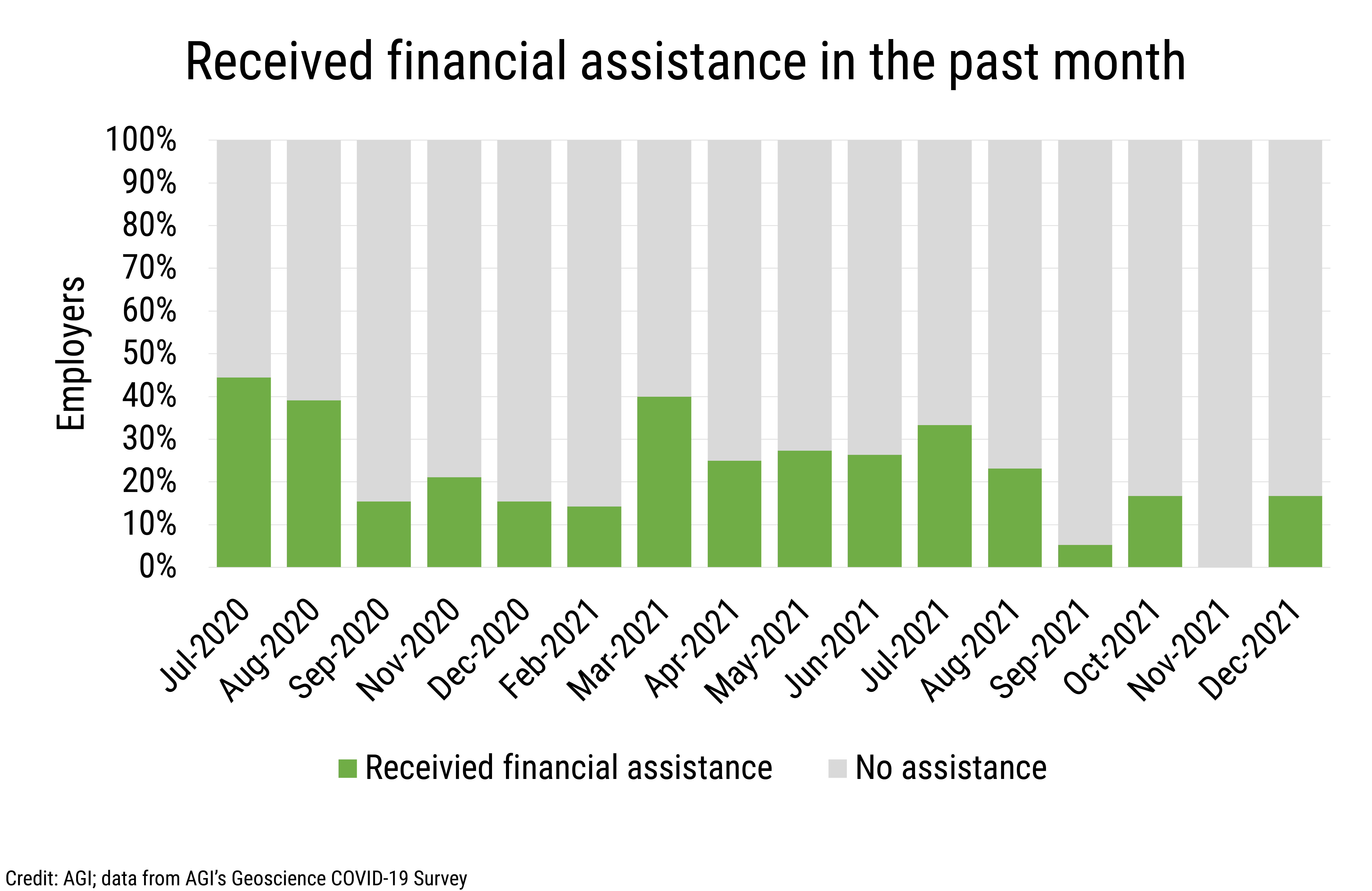
DB_2022-002 chart 04: Received financial assistance in the past month (Credit: AGI; data from AGI's Geoscience COVID-19 Survey)
AGI
Business Operations Impacts
Employers have increasingly reported no pandemic-related impacts to
business operations since 2020, with two-thirds of employers reporting
no pandemic-related impacts in December 2021. Impacts related to
facility access restrictions eased by early Fall 2020, and by Summer
2021 less than one-fifth of employers reported restrictions. Termination
or amendment of revenue generating contracts persisted as an issue
through most of 2020 for over 40% of employers but declined through
2021. Supply chain disruptions, which were reported by nearly half of
employers during Summer 2020, have persisted for at least 30% of
employers through most of 2021.
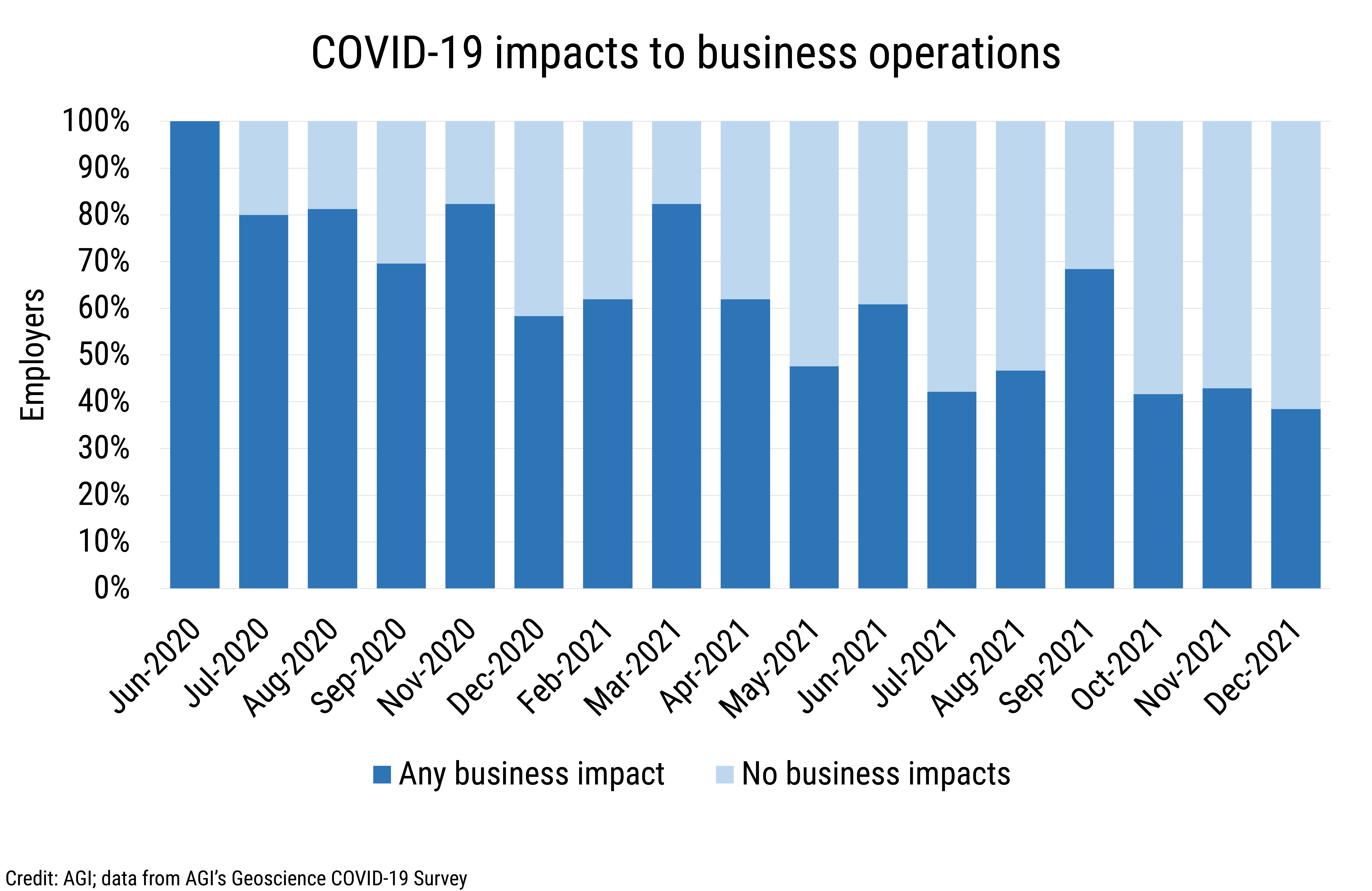
DB_2022-002 chart 05: COVID-19 impacts to business operations (Credit: AGI; data from AGI's Geoscience COVID-19 Survey)
AGI
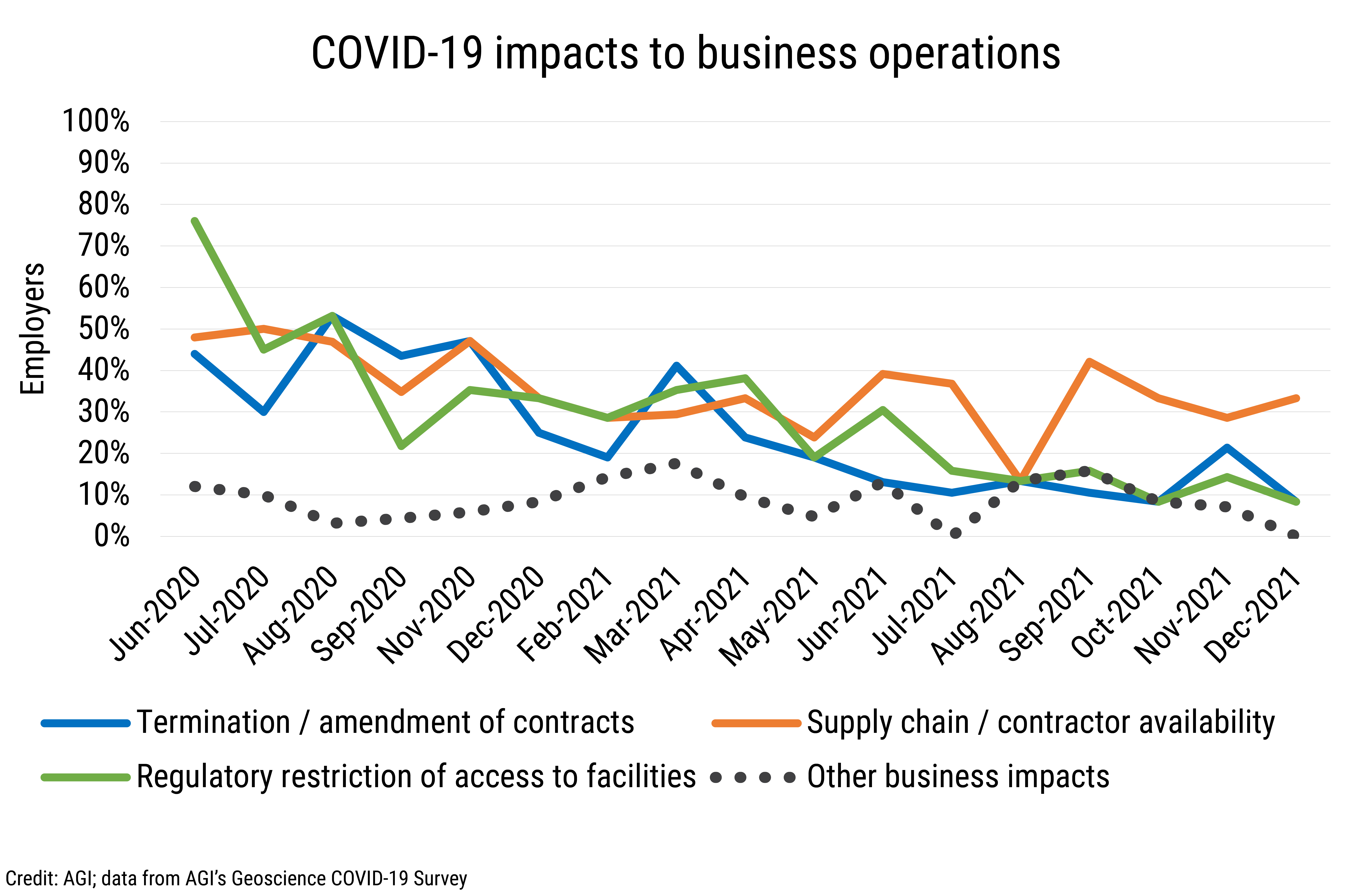
DB_2022-002 chart 06: COVID-19 impacts to business operations (Credit: AGI; data from AGI's Geoscience COVID-19 Survey)
AGI
The percentage of employers reporting supply shortages declined from 69%
in 2020 to 54% by the end of 2021. In 2020, personal protective
equipment was the most commonly reported supply shortage (62% of
employers), and in 2021, IT supplies were the most commonly reported
supply shortage (31% of employers). The percentage of employers
reporting supply shortages edged up between mid and late-2021 for field
supplies, lab supplies, IT supplies, office supplies, and other supply
shortages.
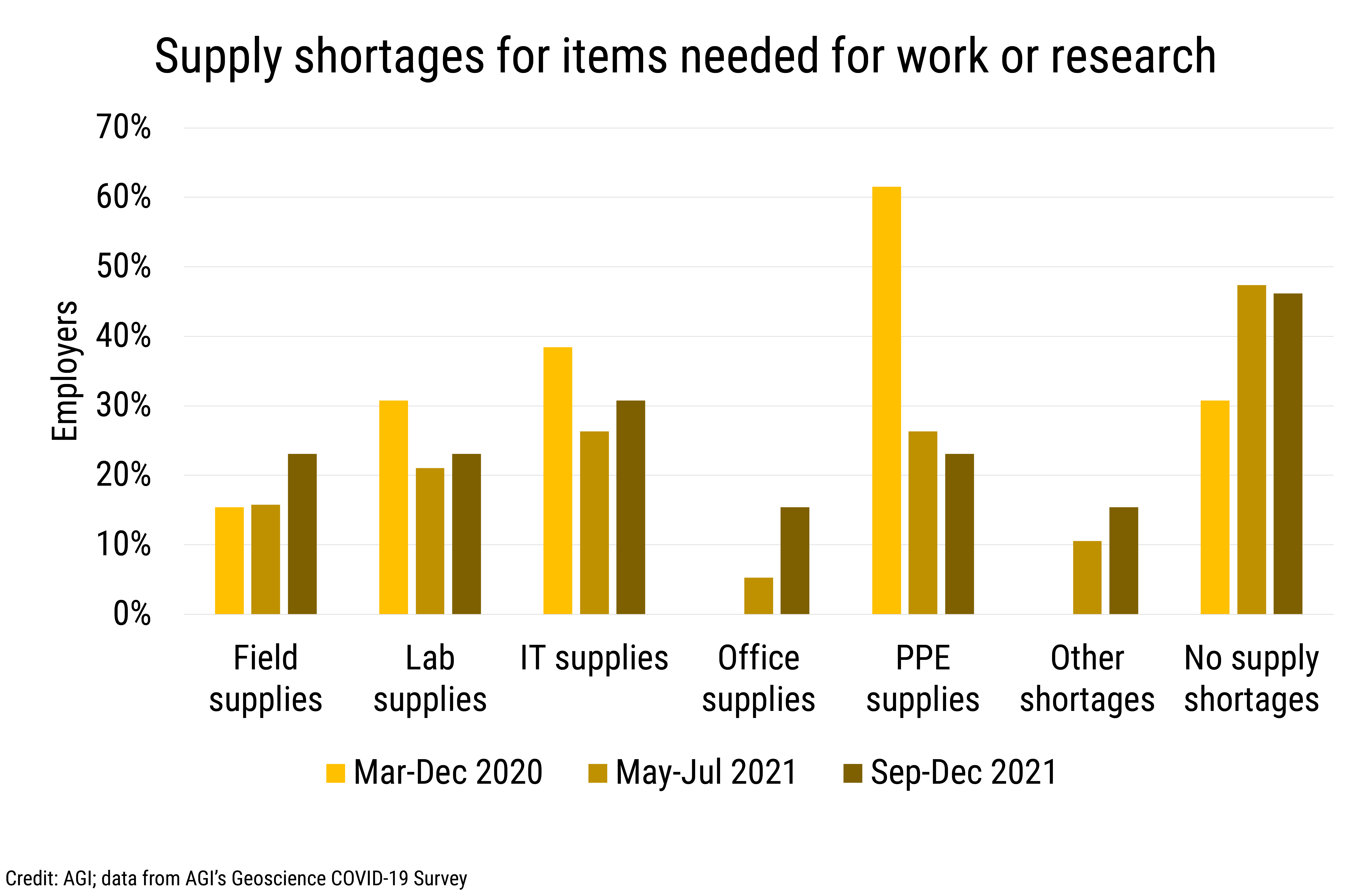
DB_2022-002 chart 07: Supply shortages needed for work or research (Credit: AGI; data from AGI's Geoscience COVID-19 Survey)
AGI
Changes to Work Environments
With the shift to remote work environments, over half of employers
reported reduced use of their office space. Three quarters of employers
reported using multiple technology platforms for conducting work, with
Zoom and Microsoft Teams being the most commonly reported platforms in
use (81% and 65% of employers respectively).
When asked about benefits to work and research during the pandemic, over
half of employers noted improved use of virtual platforms as well as
benefits to employees such as reduction in work commutes and flexibility
in work locations. In addition, over 40% of employers noted reduced
work-related expenses, reduced active usage of office spaces, and
flexibility in work hours for employees as benefits. It is interesting
to note that despite the improved use of virtual platforms and
flexibility in work location and hours noted by employers, lack of
scheduling conflicts and improved employee retention was not noted by
employers as benefits related to current work and research formats.
Despite the benefits from the way work and research has been conducted
during the pandemic, lack of in-person interactions has been the most
frequently reported challenge, with 79% of employers noting this issue.
In addition, over one-third of employers reported challenges related to
collaboration, less effective communication, and concerns related to
health and safety.
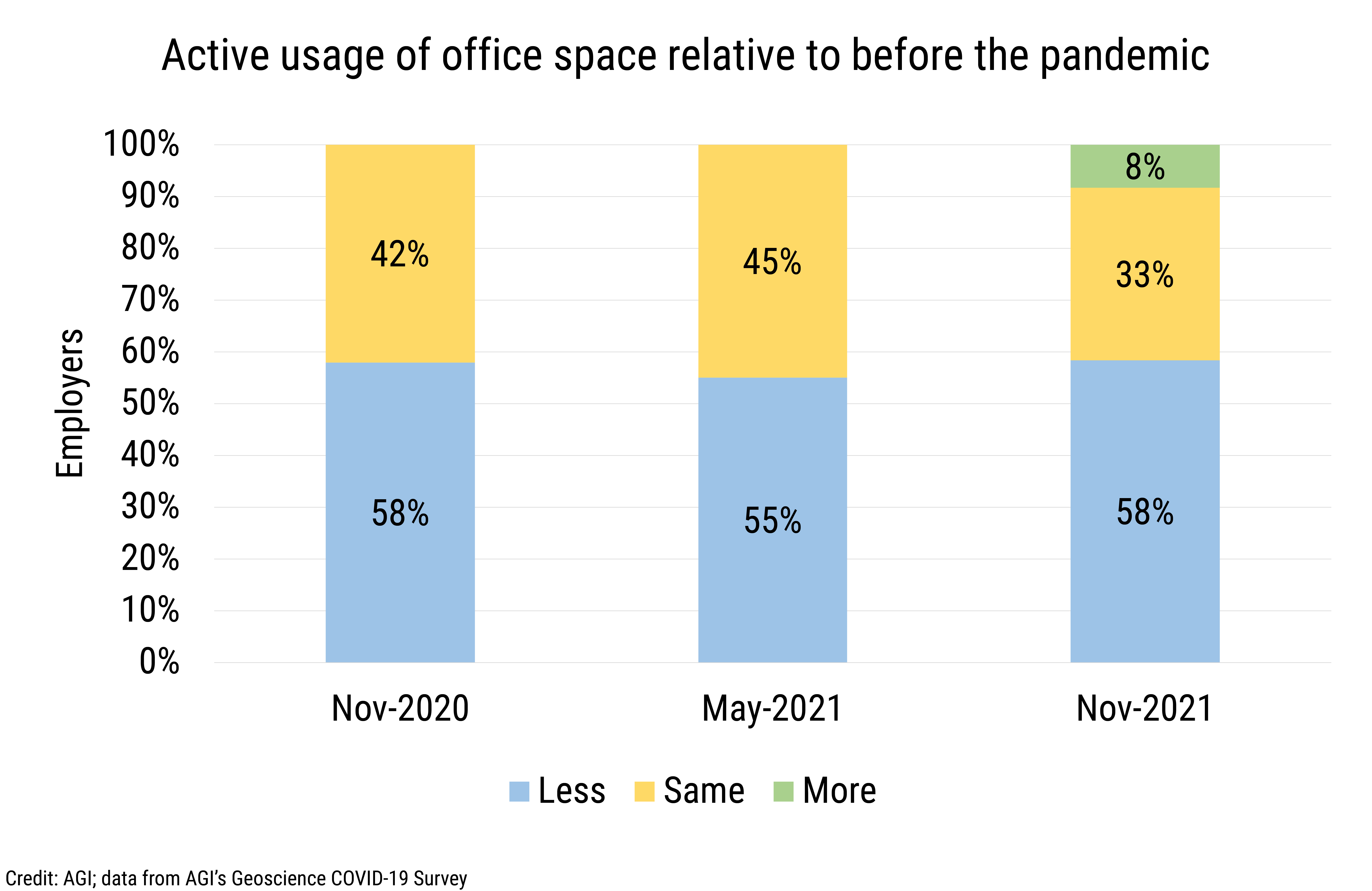
DB_2022-002 chart 08: Active usage of office space relative to before the pandemic (Credit: AGI; data from AGI's Geoscience COVID-19 Survey)
AGI
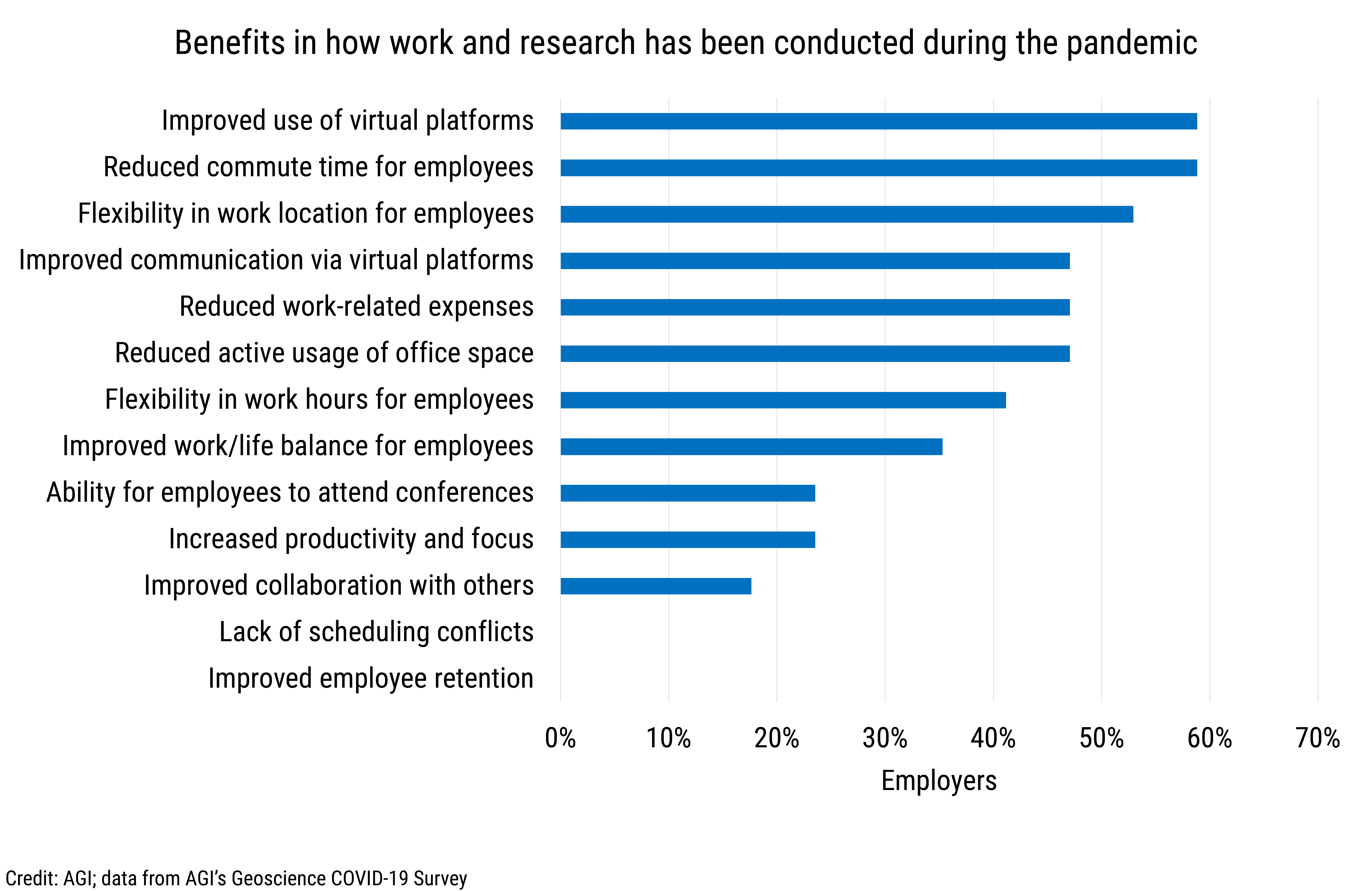
DB_2022-002 chart 09: Benefits in how work and research has been conducted during the pandemic (Credit: AGI; data from AGI's Geoscience COVID-19 Survey)
AGI
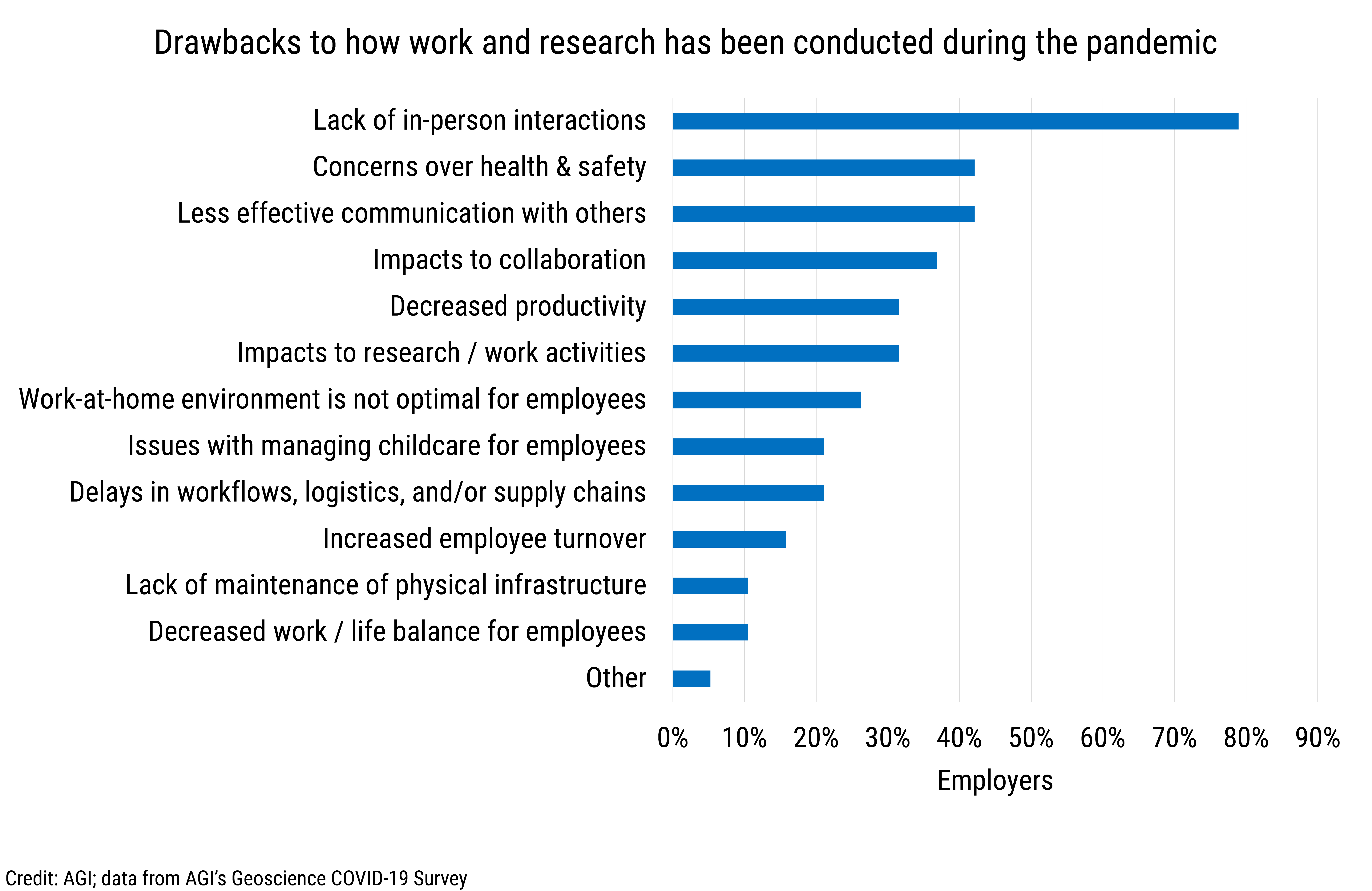
DB_2022-002 chart 10: Drawbacks to how work and research has been conducted during the pandemic (Credit: AGI; data from AGI's Geoscience COVID-19 Survey)
AGI
Strategies and Concerns
Strategies for dealing with pandemic-related impacts have primarily been
focused on investments in remote work resources and implementation of
health and safety protocols for those working in facilities, offices,
and at field sites. Other strategies noted by employers included more
flexibility in working environments, increased automation in business
operations, and prioritizing work to maintain operations and production.
Since 2020, pandemic-driven concerns of employers have decreased across
all categories except those related to supply chain disruptions. In
December 2021, 38% of employers noted supply chain concerns driven by
the pandemic. Meanwhile, the percentage of employers noting concerns
related to workplace safety, which has been a major concern for most of
the pandemic, declined from 52% in February 2021 to 31% in December
2021.
In October 2021, we began asking about non-pandemic concerns to
ascertain other issues that have begun to arise as the pandemic
continues. While the percentage of employers reporting non-pandemic
related concerns peaked in November 2021, there was a general decline
across most concerns since then, except for business operations
regulations and workplace safety. We will continue to monitor
non-pandemic related concerns in the coming months.
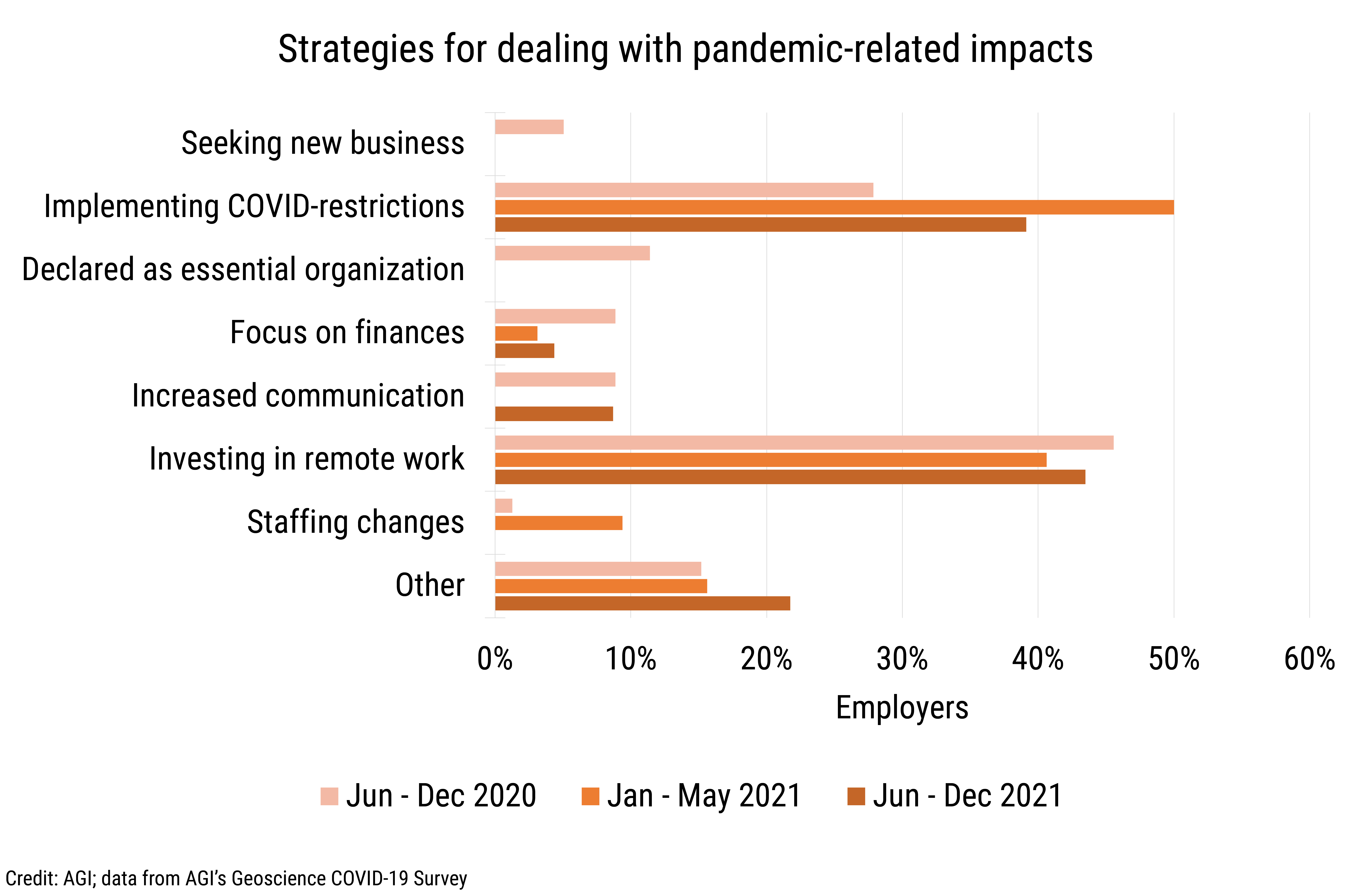
DB_2022-002 chart 11: Strategies for dealing with pandemic-related impacts (Credit: AGI; data from AGI's Geoscience COVID-19 Survey)
AGI
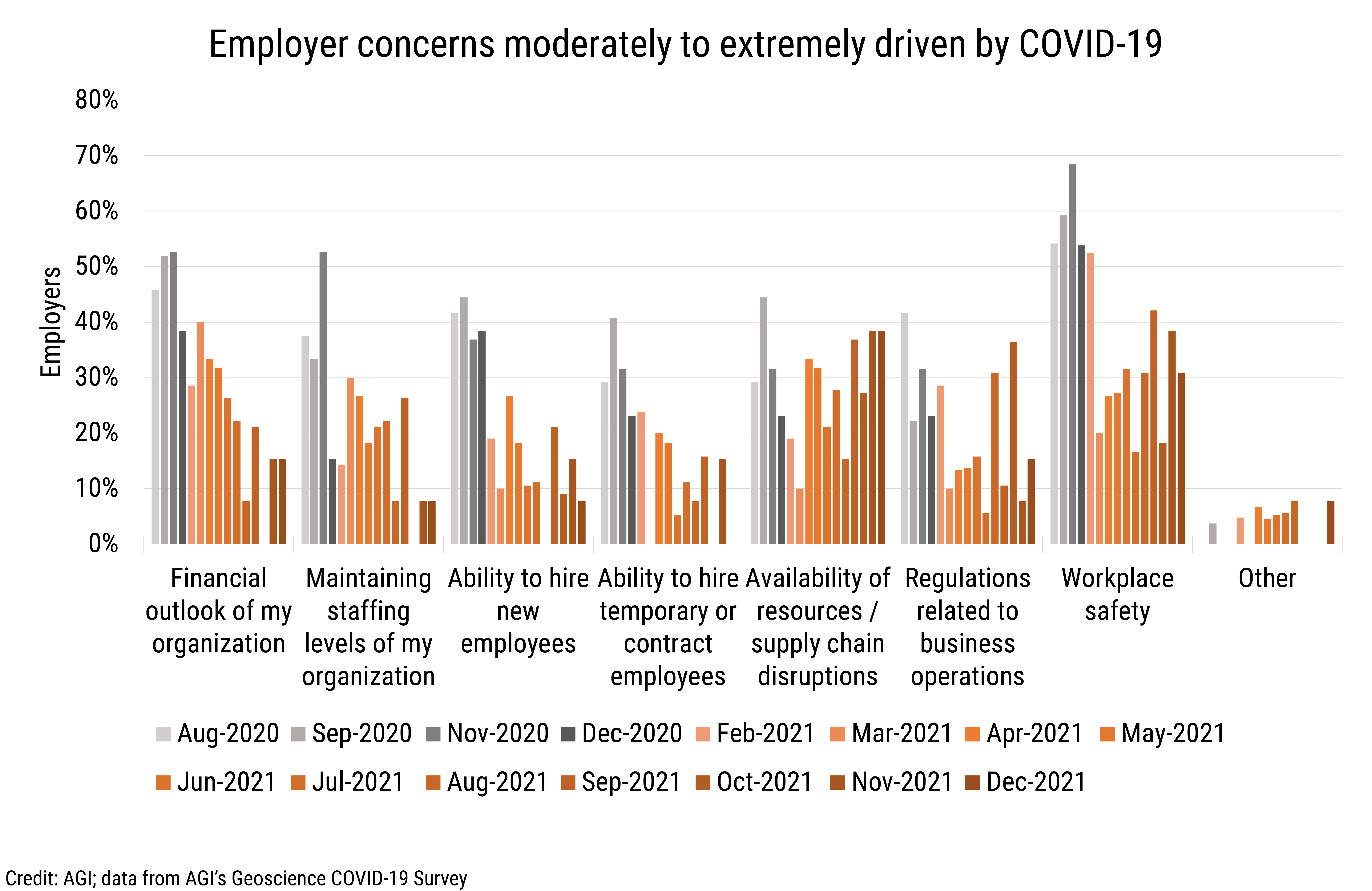
DB_2022-002 chart 12: Employer concerns moderately to extremely driven by COVID-19 (Credit: AGI; data from AGI's Geoscience COVID-19 Survey)
AGI
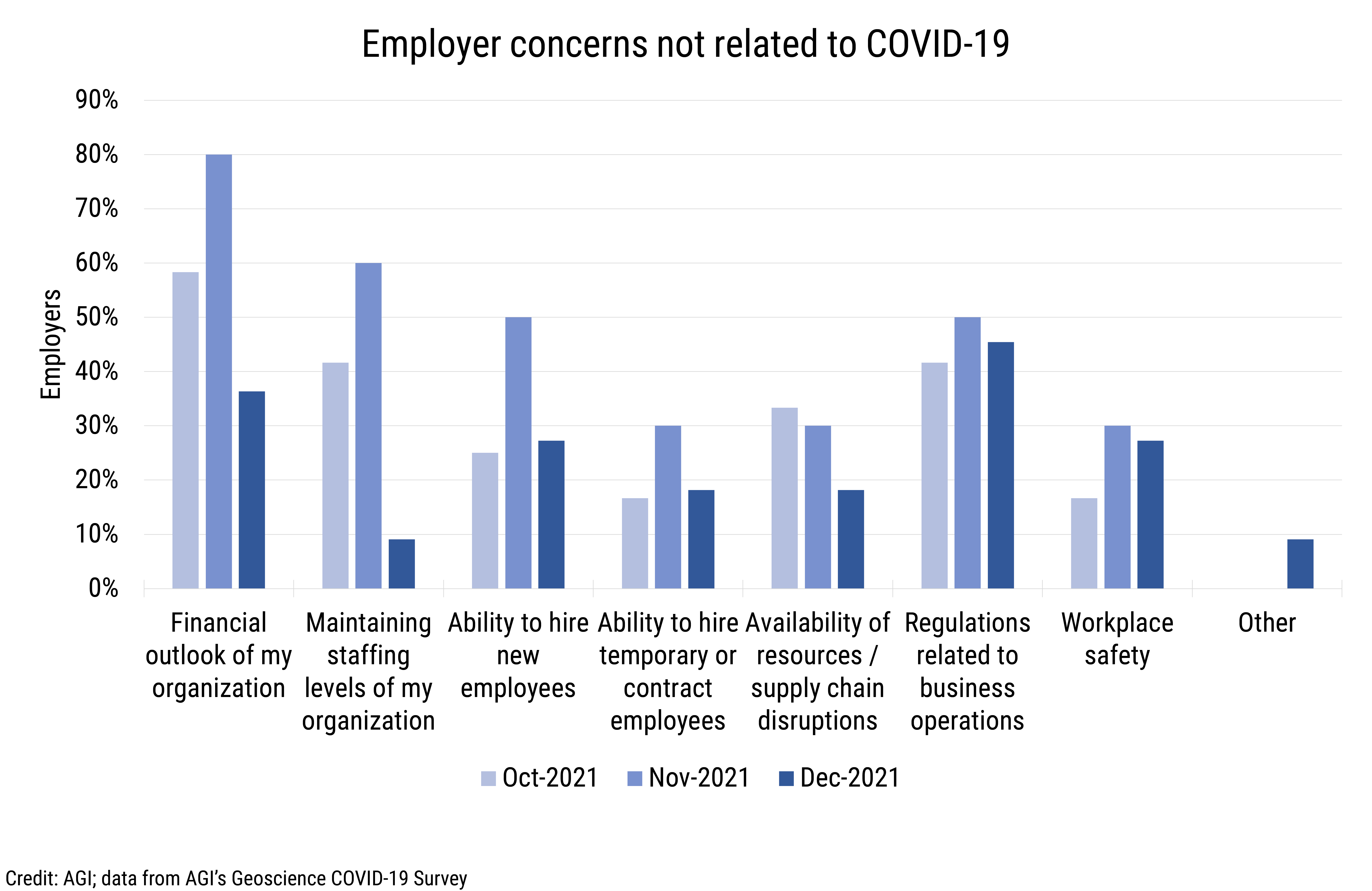
DB_2022-002 chart 13: Employer concerns not related to COVID-19 (Credit: AGI; data from AGI's Geoscience COVID-19 Survey)
AGI
We will continue to provide current snapshots on the impacts of COVID-19
on the geoscience enterprise throughout the year. For more information
about the study, please visit:
www.americangeosciences.org/workforce/covid19
Funding for this project is provided by the National Science Foundation
(Award #2029570). The results and interpretation of the survey are the
views of the American Geosciences Institute and not those of the
National Science Foundation.